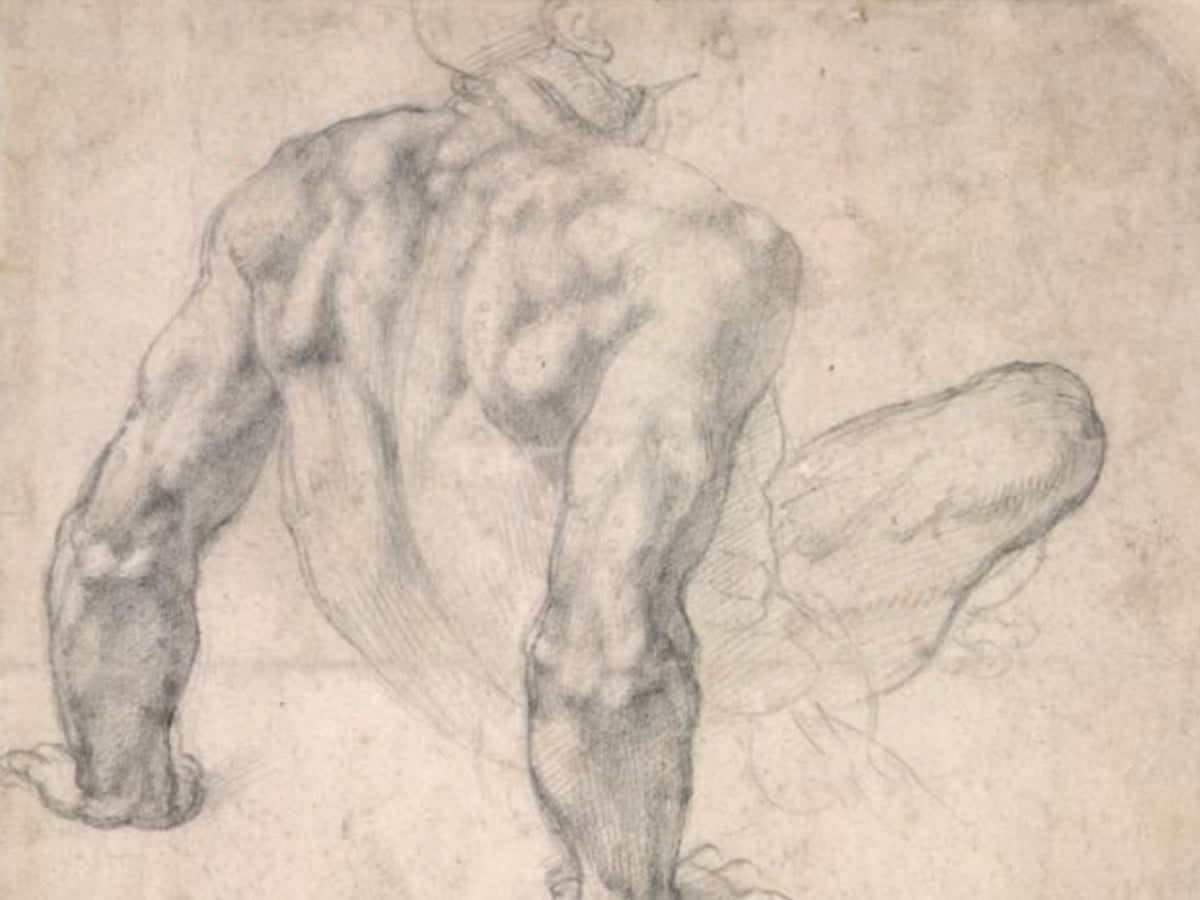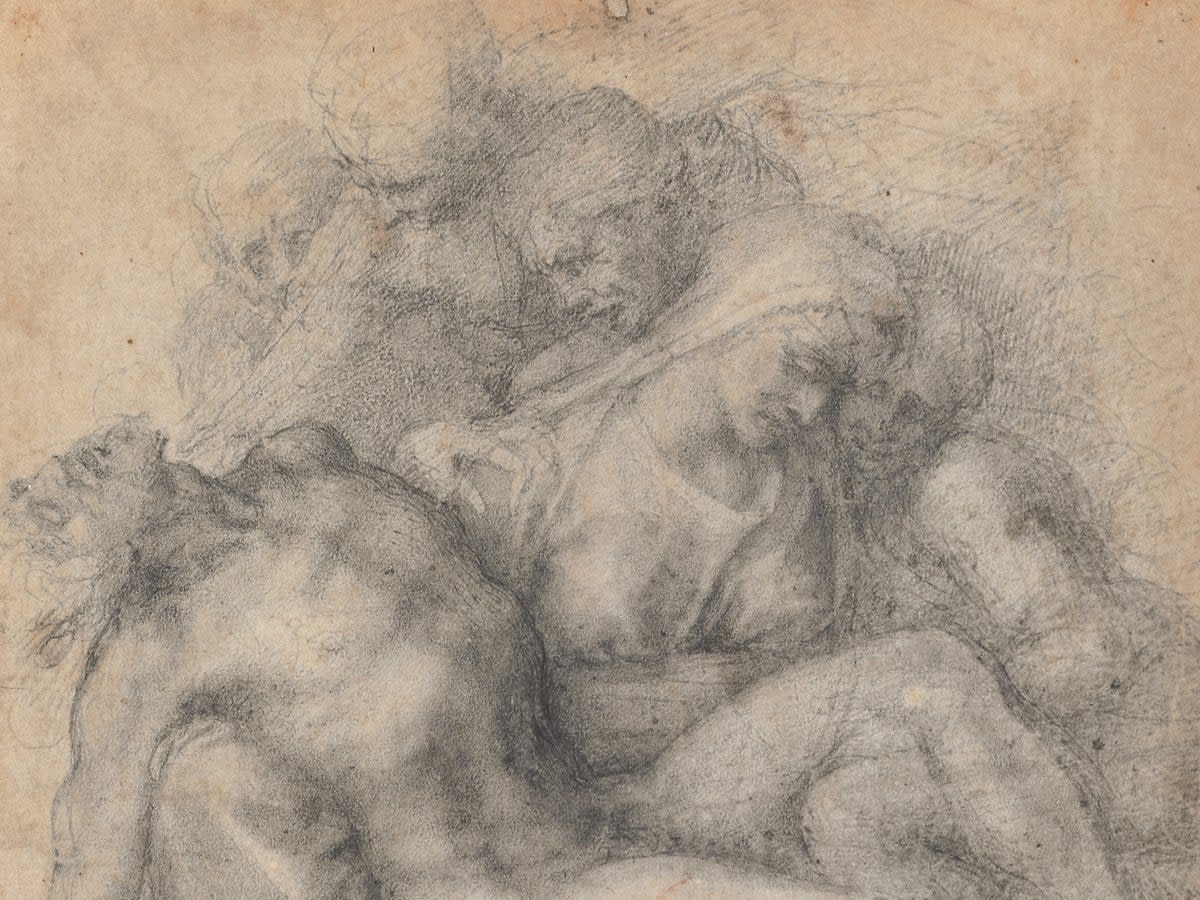Michelangelo – The Last Decades review: What a way for an artist to go out

Michelangelo for all his immense fame isn’t the most immediately lovable of artists. People crowd to stare in awe at his iconic statue David and mega-fresco The Last Judgement in the Sistine Chapel, but how many of us actually like them? I doubt if today’s artists give the great Renaissance man more than a passing thought from one end of their careers to the other. Michelangelo, nonetheless, is one of the artists who gave rise to the notion of “late style”: the idea that the artist’s vision gets truer and more personal the older they get.
So a show on the great man’s “last decades” should be enough to stop even the most jaded gallery-goer in their tracks, with the prospect of stripping back the hyperbole and getting to everything that’s gritty and still relevant about this hugely important figure.
Worries set in, though, before we’re even in the exhibition, as a gravelly voiced actor intones selections from Michelangelo’s letters in Italian and English, with the artist’s handwriting materialising across a screen overhead. The exhibition has clearly borrowed tactics from those “immersive” multi-sensory art experiences that draw big crowds, but which are generally derided by critics. Is the need here to draw in the non-specialist viewer – or simply desperation at not being able to obtain sufficient works for a proper standalone exhibition?
Since Michelangelo’s signature sculptures and frescoes don’t travel, an exhibition of this kind will inevitably rely on works on paper and whatever paintings it can muster. Thankfully the experience of getting very close to some of the greatest drawings of all time helps blot out the heavy breathing renditions of the artist’s letters which continue – at varying volumes – throughout the show. “I could as soon forget your name as forget the food on which I live.” Please, spare us.
The focus is on the final 30 years of Michelangelo’s life, after his voluntary exile to Rome in 1534, having fallen out with the ruling Medici family in his native Florence. Much of his time was taken up with The Last Judgement, and sketches for this colossal work, with its tumbling and soaring figures of the damned and the exalted, exemplify his approach to drawing, based on the meticulous mapping of the contours of the naked human form. Quasi-scientific his interests may have been, but there’s nothing remotely sterile in these small, but intensely passionate drawings in which you can feel the heat and tension in every last bulge of the ripped torsos; and this being Michelangelo, it’s the male body that generates the greatest excitement. Judging by his letters and poems, he was out as gay as far as was possible in 16th-century Italy.
The show’s immersive aspects pay dividends in panning shots across the frescoes shown on a nearby screen, which freeze when we reach the sections represented in the drawings, with the sketches superimposed over the top. There’s something quite humbling about being drawn so tangibly into the creation of such a momentous work.
Yet drawings of The Fall of Phaeton (1540-45), with the doomed god’s horses plunging out of the sky, created for Tommaso de’ Cavalieri, a young man with whom judging by the wall texts Michelangelo was clearly besotted, lack the vitality of the working studies. When Michelangelo senses an audience watching, his drawings can become slightly saccharine in their eagerness to please.
And we’re told rather too much about the artist’s relationship with Vittoria Colonna, a prominent aristocrat at the hub of attempts to reform the Catholic Church through a more personal approach to worship. Yet the only image visibly testifying to Michelangelo’s interest in this new spirituality is a hyper-sensitive and startlingly realistic drawing of Christ on the cross (1538-41). This is transposed into one of several paintings in the show by Michelangelo’s associate Marcello Venusti, all from the master’s drawings and dedicated to Colonna. They range from pleasantly workmanlike in The Crucifixion (1540-45), to plain mediocre in The Annunciation (1540-45), from a drawing only attributed to Michelangelo.
Many viewers will walk straight through the section on Michelangelo’s architectural achievements, however beautiful the engravings of his majestic dome of St Peter’s – and none of them are by him. While the artist’s designs for the rebuilding of the cathedral are agreed to have been revolutionary, he considered them an exasperating distraction from his real work. Reading his angry declamation, “I am not an architect”, the viewer will know what he means.
By this stage the exhibition badly needs a real showstopper, which appears in the form of the larger-than-life-size drawing Epifania (1540-45), from the British Museum collection, getting its first public airing after major restoration. The figure of the Virgin flanked by unidentified males is rendered in black chalk marks that have blurred to a haunting ghostliness, which makes the monumental scale and density of the work all the more moving. A lively, almost cartoon-like painting from the drawing by Ascanio Condivi, a young admirer of Michelangelo, makes an entertaining aside. The fact that there aren’t any actual Michelangelo paintings in the exhibition shouldn’t come as a surprise: there don’t seem to be any from this period bar his large final frescoes.

This bitty exhibition provides moments that take us as close as can be imagined to one of the great minds of art. But much else is of essentially academic interest. The most powerful moments come in the final room in six modestly sized and superficially very similar drawings of the crucifixion, created in Michelangelo’s final years. Heavily overworked by the now frail artist, so the lines blur, the chalk apparently gouging the paper, they were created without any obvious commission, as aids, the exhibition speculates, to meditation before death. The slight prissiness of much Renaissance art, born of the need to please the patron, gives way to a raw and haggard intensity. The hammering of this single image as Michelangelo fights to get to ultimate emotional truth feels startlingly modern. In the final drawing the flanking saints are gone, leaving only Jesus, facing oblivion alone on the cross. What a way for an artist to go out.
‘Michelangelo: the last decades’ is on from 2 May until 28 July
